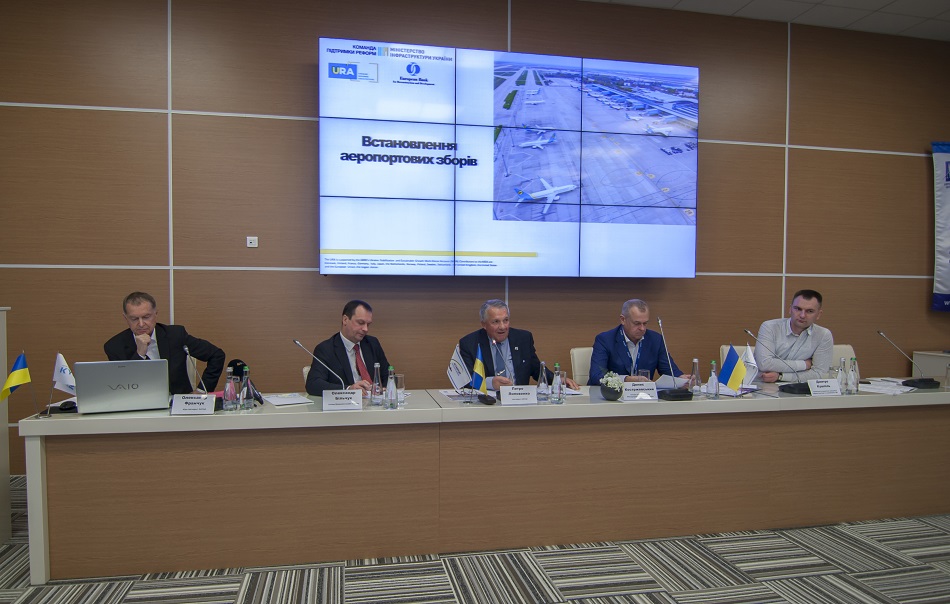
On November 19, 2021, Business Terminal B of Kyiv Sikorsky International Airport hosted the Economic and Legal Aviation Forum devoted to the development of Ukrainian airports. Now, these tasks became the basis both for Open Skies Agreement signed by and between Ukraine and EU on October 12, 2021, and for Big Construction project initiated by Ukrainian President Zelensky.
This time, the participants of the meeting, representatives of Ukrainian and foreign airports, the Ministry of Infrastructure of Ukraine, relevant services and departments, and well-known audit and law firms focused on two key issues. And both of them aimed at bringing the state's airport infrastructure in line with EU standards.
"Open Skies Agreement is a powerful step to the development of our airports, says the President of Association “Airports of Ukraine” of civil aviation Petro Lypovenko. That will not only boost air traffic in regions, but also to cheaper fares, which is good both for the state and passengers. However, in order for airlines to start flying here, a lot of things need to be done. First, the airport infrastructure must be brought in line with international and European standards: airfields, technical equipment, software, and so on. They must meet the expectations of airlines."
The airport representatives believe that the rapid adaptation of domestic industry infrastructure is the biggest challenge for each airport and for Ukraine as the state.
That means that airports may get crucially needed funds for infrastructure development by increasing airport fees. That option is ensured by the EU directive which provides for the deregulation of economic activities for airports with up to five million passengers per year. Now these deductions are regulated by the Ministry of Infrastructure of Ukraine. However, once the amendments to certain governmental documents are approved, these issues will be controlled by the respective airports.
"The Infrastructure Ministry is supposed to set airport fees only for airports with passenger traffic of more than five million people a year, says Oleksandr Lemeshkin, the representative of the Reform Support Team of the Ministry of Infrastructure. Others will be offered the procedure and methods for airport fees calculation. It will describe the procedure, take into account the reduction coefficients, which are currently about ten, the results of consultations with users, the deadlines for submitting relevant documents to state bodies, and so on. We are already working on a roadmap considering all challenges that airports will face when determining those fees".
Airports representatives insist that is crucially necessary to speed up the methodology preparation procedure, it must not last more than a year. Also, fee calculation methodology must consider two important aspects: airport maintenance and operational expenses, and their development. The latter may be implemented due to concession, i.e. a public-private partnership. The representative of Dalman airport, Turkey, Airports of Ukraine Association's foreign partner, says that such agreements have many advantages: the state does not need to spend budget resources to the development of infrastructure facilities because they are funded by foreign lenders; the state regularly gets facility management fees from private partner; a private partner faster constructs and commissions important infrastructure facilities; a private partner is interested in the development of not only an airport but also the whole city and region because "passengers travel to a city, not an airport."
"The public-private partnership issue arose in Turkey in the 90s when lawmakers started to develop the PPP laws, says Hamdi Güvenç, СЕО Dalaman Airport. The terminal of Antalya Airport became the first such facility. After we won the tender, the state gave us only 4-5 years for terminal design, construction, and commissioning, as well as for payback and profit. We managed to do that by the end of the established deadline. When the government saw that this business model works, other PPP projects were launched."
According to Mr. Güvenç, the Dalaman project became the game-changer in Turkish concessions. Dalaman is an international airport that together with Antalya and Bodrum airports serves the south-western region in Turkey. After the Dalaman project was implemented, PPP spread further to other industries. The Dalaman Airport representative says that from 1986 to 2020, there are 249 such projects in Turkey already, and they earned about USD 156 billion.
"The largest state revenues come from airports", emphasizes Hamdi Güvenç. And after successful implementation is this industry, PPP is being favorably implemented in others: about 97% of Turkish energy facilities operate under that model. Also, international autobahns, bridges, ports, and even regional hospitals. On those terms, we have built and operate hospitals in three major cities in Turkey. Therefore, in medicines that principle is also being successfully promoted and developed".
Among other things discussed by the forum participants, the conditions of admission of foreign handling companies to the domestic ground handling market were discussed. The meeting resulted in a key decision of economic and legal forum participants: to draw the attention of relevant ministries and departments to the need of bringing industry regulations in line with EU standards as soon as possible. First of all, in terms of setting airport fees, regulating access to the market of foreign handling companies and transferring aviation industry enterprises to a concession.

